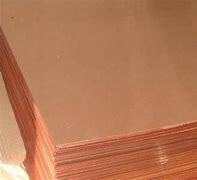1. Introduction
As of May 22, 2024, copper prices surged past $10,000 per metric ton on the London Metal Exchange—the highest in over two years—driven by supply constraints and rising demand in renewable energy and EV infrastructure. This spike directly impacts everything from copper rod price to copper strip price, making material selection more critical than ever for engineers, electricians, and recyclers alike.

In this deep dive, we’ll unpack the nuances between different copper rod and strip types—from earthing rods to brazing rods—and help you choose the right one for your project based on performance, cost, and application.
2. Copper Rod Variants: Purpose-Driven Differences
Not all copper rods are created equal. The term ‘copper rod’ broadly covers several specialized forms, each engineered for distinct functions.
2.1. Earthing and Grounding Rods
When it comes to safety grounding, terms like copper earth rod, earthing rod copper, and ground rod copper are often used interchangeably—but materials differ significantly.
Pure copper rods offer excellent conductivity and corrosion resistance but come at a premium. More commonly, you’ll encounter copper bonded earthing rod or copper clad ground rod options. These use a steel core (for strength) coated with copper—either through electroplating (copper bonded steel) or metallurgical bonding (copper clad steel earth rod).
- Copper bonded steel: Thinner copper layer (~0.25mm), lower cost, suitable for moderate soil conditions.
- Copper clad steel: Thicker copper cladding (≥0.5mm), better longevity in corrosive soils, often used in telecom and substations.
Earthing rod price varies widely: pure copper rods can cost 3–4× more than copper-bonded alternatives, making copper bonded ground rod a popular budget-conscious choice.
2.2. Welding and Brazing Rods

For joining metals, copper welding rod and copper brazing rod serve different purposes.
Copper to copper welding rod is rare—pure copper’s high thermal conductivity makes fusion welding difficult without preheating. Instead, most professionals use copper to copper brazing rods, which melt at lower temps and flow into joints via capillary action.
Common filler alloys include phosphorus-deoxidized copper (for plumbing) or silver-bearing rods (for high-strength joints). Note: ‘Welding rod copper’ is often a misnomer—true copper rod for welding is typically used as a base material, not filler.
3. Copper Strips: From Earthing to Scrap Recycling
Flat, flexible, and highly conductive, copper strip (also called copperstrip, flat copper strip, or copper metal strips) serves roles far beyond what round bars can handle.
3.1. Electrical and Earthing Applications
Copper strip for earthing—often specified as copper earth strip 25x3mm—is favored in switchgear and grounding grids due to its large surface area and ease of bending. Beryllium copper strip or nickel plated copper strip may be used where spring properties or oxidation resistance are needed.
Rolls of thin copper strips (e.g., 1mm copper strip) are common in transformers and busbars. Flexible copper bus bar designs rely on layered copper strip for vibration resistance.

3.2. Wire Stripping and Scrap Value
With copper prices climbing, stripping copper wire for scrap has become increasingly lucrative. But methods matter.
Burning copper wire for scrap is illegal in many regions and damages purity. The best way to strip copper wire is mechanical: using automatic strippers for insulated cable or manual tools for smaller jobs. For stripping wire for recycling, clean, bare copper fetches top dollar—especially when separated from insulation.
The fast way to strip copper wire involves industrial machines, but hobbyists often use razor blades or heat guns (carefully!). Remember: ‘stripping cable for copper’ only pays off if labor costs don’t outweigh scrap value.
4. Related Copper Products: Pipes, Bars, and Ingots
While rods and strips dominate conductive applications, other forms like copper tubing and copper bar play supporting roles.
Aircon copper pipe (used in AC systems) requires precise sizing—15mm copper pipe for residential lines, 22mm copper tube for larger units. Soldering these demands clean surfaces and proper flux; resoldering copper pipe without removal is tricky but possible with careful heating.
Copper round bar and round bar copper are machined into components, while cu bars or copper ingot feedstock supply foundries. Copper bar top and flexible copper bar variants support custom busbar fabrication.
Interestingly, copper strip near me searches spike during DIY seasons—highlighting demand for small-scale projects like copper roof strip edging or even copper tape for snails (a gardening hack!).
5. Conclusion
Whether you’re selecting an earthing rod copper for a substation, sourcing copper to copper brazing rods for HVAC work, or evaluating the best way to strip copper cable for scrap, understanding material differences saves money and ensures performance. With copper prices volatile and applications diverse, knowing your copper—bonded, clad, pure, or alloyed—is more valuable than ever.
Our Website founded on October 17, 2012, is a high-tech enterprise committed to the research and development, production, processing, sales and technical services of ceramic relative materials such as Copper. Our products includes but not limited to Boron Carbide Ceramic Products, Boron Nitride Ceramic Products, Silicon Carbide Ceramic Products, Silicon Nitride Ceramic Products, Zirconium Dioxide Ceramic Products, etc. If you are interested, please feel free to contact us.

